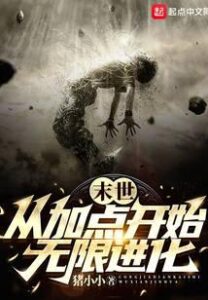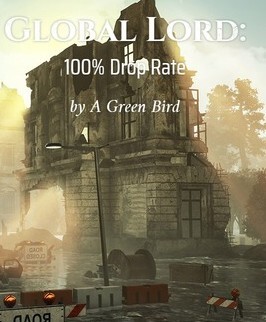Chapter 185 Trap
The sky is slightly bright, and the smoke gradually dissipates.
There was silence on the battlefield for a while, and then the sound of tank motors was heard in the rain on the opposite side, and German tanks covered the infantry and rushed towards the Soviet positions in a row.
Most of the tanks that came up were No. 1 and No. 2 tanks, and there were also No. 3 tanks, but they followed behind No. 1 tank.
It is understandable for the German army to do so.
First of all, tanks 1 and 2 are light in weight, and they are more suitable for driving on muddy roads... If tanks 1 and 2 cannot pass, tank 3, which is twice as heavy as tank 2, should stop.
Followed by the small size of the No. 1 and No. 2 tanks, they can more flexibly avoid bomb craters and rush to the enemy's position.
The tank drove forward slowly amid the sound of motors, and the German soldiers pushed forward over the tank.
Infantry often do this when attacking for the first time, because there are likely to be mines, barbed wire, and other obstacles in the mud... It is impossible to blow up all these things and clear a path for tanks with shells, so the infantry needs to walk in Clear obstacles ahead, and even guide tanks behind to attack from a safe position.
Otherwise, the tank might be bombed and paralyzed in place before it can advance very far.
Of course, these wreckers have to take great risks. On the one hand, they have to bear the threat from landmines, and on the other hand, they have to withstand the enemy's firepower. In this case, they have to work hard to complete the task.
The second, third, and subsequent attacks are much better, because these obstacles will not reappear unless the enemy has not attacked overnight and placed obstacles again.
But in this attack, the German wreckers felt that their task was much easier than before.
The reason is that there are not many obstacles and mines on the ground, and more importantly, due to the low visibility, the Soviet army has not implemented fire suppression against them.
What they don't know is that it's not that there are not many obstacles, but that they don't see them.
Then…
With a bang, a soldier fell into a mud pit.
The German army didn't pay attention to it at first, thinking that it was just a mud pit formed by accident, and this kind of situation often happened during the march.
But soon, several soldiers fell into the mud pit one after another.
The mud pit was filled with mud, especially the surface was covered with a layer of solid soil, and the wrecker infantry was not mentally prepared to step into the air.
You should know that these mud pits are used to trap tanks, so the width is about two meters, and the length is not necessarily... This is the minimum standard for anti-tank trenches. If the width is too small, tanks can directly pass over them like rolling over trenches.
Such length and width may be a sinkhole for tanks, but it is a big bathtub for soldiers, just a bathtub filled with mud.
As soon as the wrecker infantry fell down, he swallowed a few mouthfuls of mud like a dog eating shit, and it took him a long time to come up to wipe off the mud on his mouth and nose before he was able to breathe heavily.
Although the time before and after was short, it felt like saving a life.
Even if some wrecker infantry fell, if there were no comrades to pull them up, they might not come up and die in a few breaths.
The wrecker infantry wanted to alert the tanks behind them, but at this moment, the gunfire and artillery sounded in the Soviet position...
These guns and cannons are not designed to kill the enemy.
At this time, the enemy was still more than 300 meters away from the Soviet defense line, and only a little moving shadow could be seen in the rain. It was not easy to hit the target.
This is done to put a little pressure on the enemy and make it more difficult for the Wrecker infantry to communicate with the tank.
Sure enough, under the pressure of the guns, the infantrymen hurriedly sought cover to hide.
The tank passed them at this point and moved on.
This is the standard procedure of the German army. Tanks and infantry cover each other or cooperate, but the tank soldiers don't know that the infantrymen don't want the tanks to come forward.
Then, the accident happened...
First, a tank plunged into the mud pit with a "boom", and it couldn't move after kicking up a large swath of mud.
Going forward, the front armor is against a nearly two-meter-high earth wall, and the tracks are inserted obliquely downward into the mud pit, and the more the tracks turn, the deeper they sink.
Retreat... German tanks have a reverse gear, but the retreat also does not work because the bottom is muddy. Under the gravity and the reverse rotation of the tracks, the result is still sinking deeper and deeper.
So the best thing to do is to stop still.
Then a No. 2 tank rolled over... This kind of situation is relatively rare. It usually has one half of the body rolling over the ground and the other half hanging over the trap, and then loses balance and flips into the trap.
This situation is quite sad. The No. 1 and No. 2 tanks have no escape doors due to their small chassis. In fact, the same is true for the No. 3 tanks. All crew members can only enter through the top hatch. It was not until the No. 4 tank that the driver was added. Exclusive entrance and escape door for personnel.
So a rollover blocked the hatch, and all the crew could only wait in the tank, waiting for water and mud to seep in through the gap, and then more and more, more and more...
Often this kind of slow death is the most painful, because they will experience a considerable period of painful struggles before they are alive, and they are still enclosed in a tank and almost isolated from the world, making them ineffective every day.
Commanding the German army to intersperse is Army General von Schweppenburg.
It is the habit of the 2nd Armored Group for the general to come to the front to command in person. This habit was initiated by Guderian, the father of armor and the commander of the 2nd Armored Group. Only then can we change tactics flexibly, in a targeted manner, and in a timely manner for command.
This is a good habit, which has made Guderian's reputation, and at the same time has become a target for his subordinates to follow. This habit has even spread to other armored units and even other arms.
As the commander of the 24th Motorized Army of the 2nd Armored Group, Schweppenburg is of course no exception.
At this time, he was standing next to a No. 3 tank 300 meters behind the offensive line, holding up a telescope to observe the battle situation on the front line.
The tanks that appeared one after another surprised Schweppenburg very much.
After thinking for a while, he put down the binoculars and said two words to the adjutant beside him, "Retreat!"
Then Schweppenburg walked to the map and remained silent.
Schweppenburg knew what the Russians were doing. It was by no means an accident that the tank fell into the pit, nor was it a bomb crater. It was a trap dug by the Soviets.
If there are such traps all the way from here to the city of Tula...
Schweppenburg didn't dare to think about it anymore, which meant that the entire army's tanks would not be able to reach Tula.
Soon, Schweppenburg realized he had only one path: the railway.
(end of this chapter)
RECENTLY UPDATES







